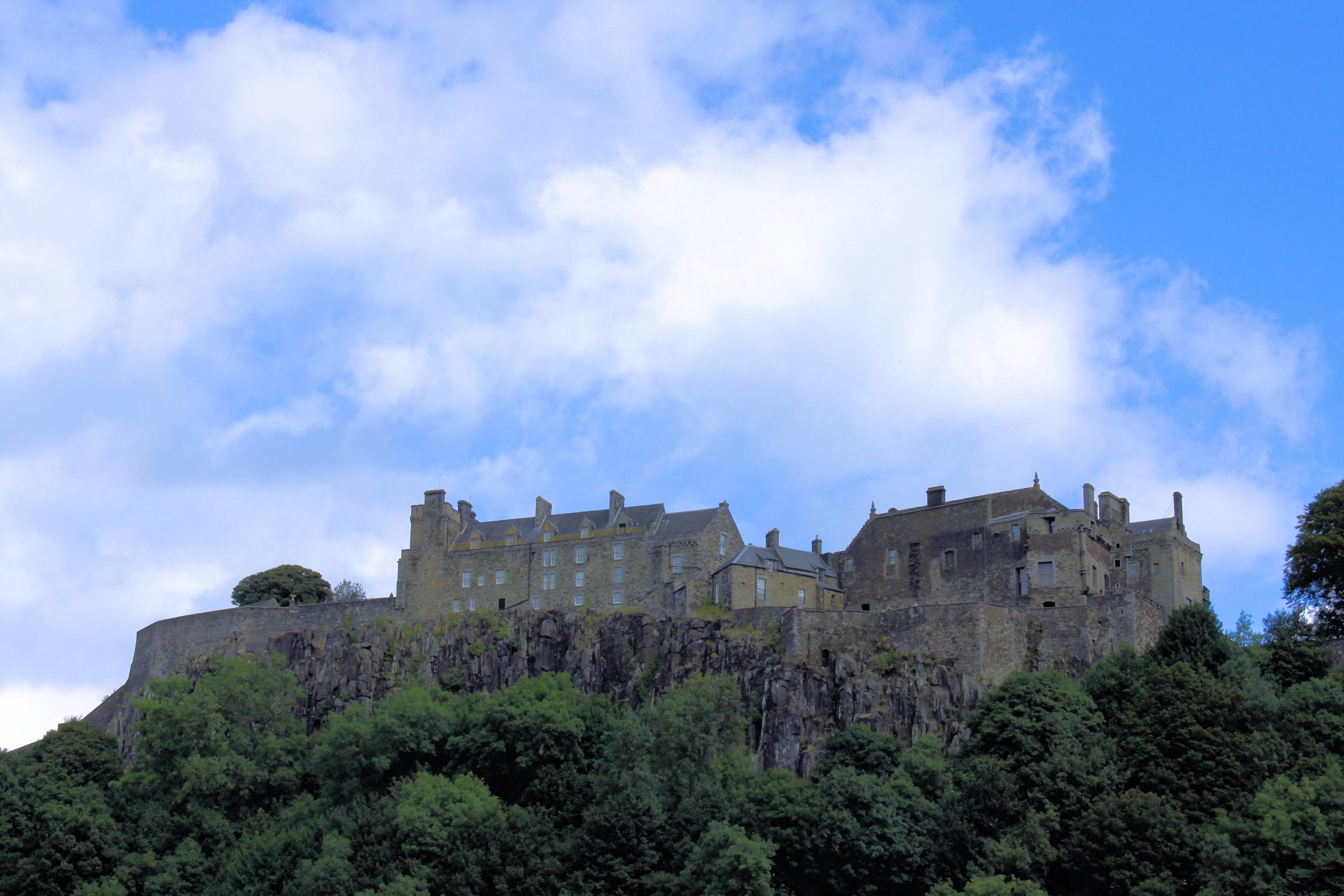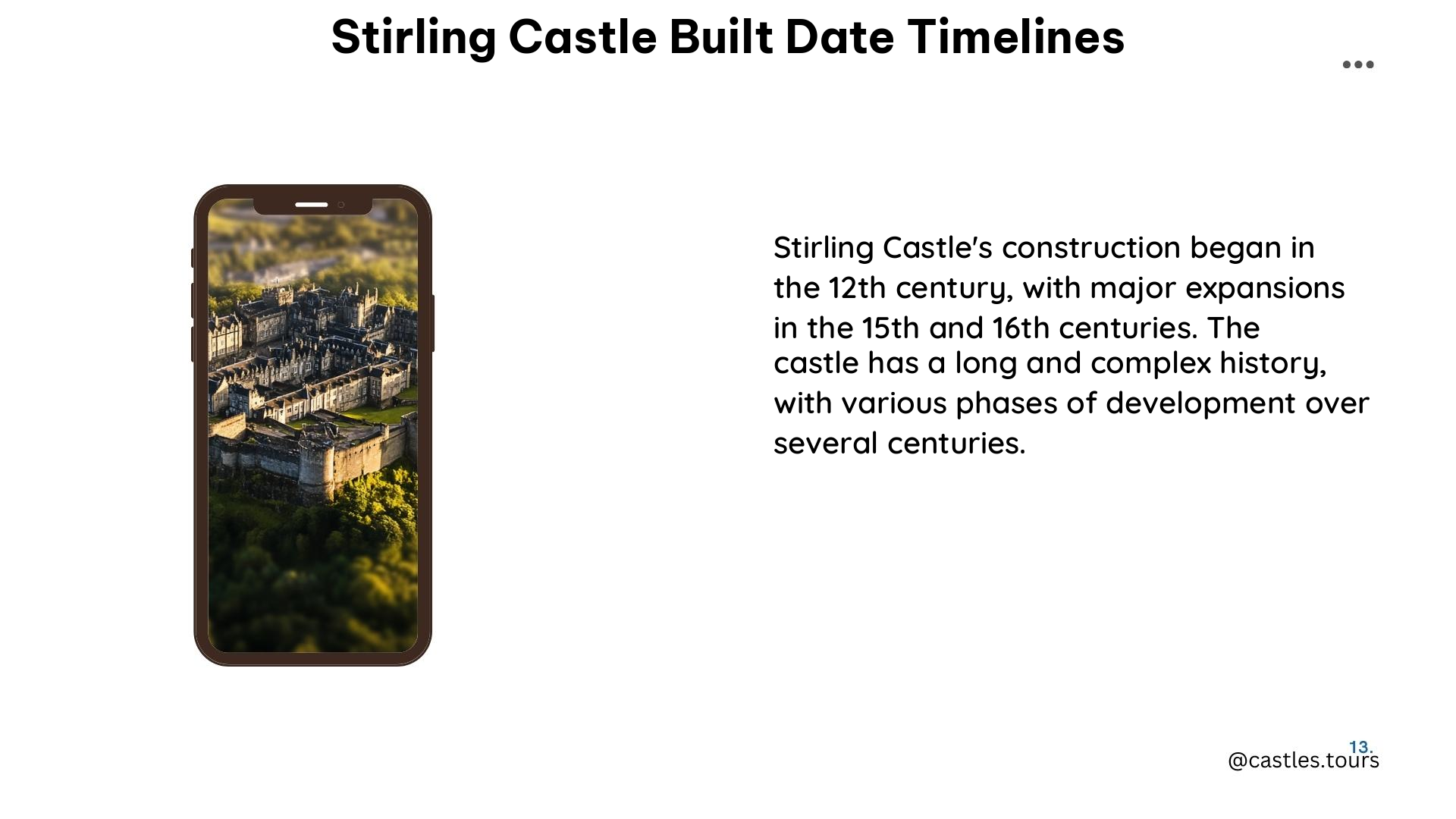Stirling Castle, a majestic fortress in Scotland, has a rich and captivating history that spans centuries. From its prehistoric origins to its role as a royal residence and military stronghold, the castle’s timelines offer a fascinating glimpse into the country’s past. In this blog post, we’ll explore the key dates and events that have shaped the evolution of Stirling Castle.
Prehistoric Roots and Early Fortifications

The site of Stirling Castle has been fortified since prehistoric times, with evidence of ancient settlements and defensive structures dating back to the distant past. The earliest recorded mention of the castle dates back to the 12th century, but its origins can be traced even further.
12th Century: The First Recorded Mention

The first written record of Stirling Castle dates back to the 12th century, indicating that it was already an established fortification at that time. This early mention suggests that the castle had been in existence for some time, serving as a strategic stronghold in the region.
1496: The King’s Old Building
In the late 15th century, King James IV made significant additions to Stirling Castle. He commissioned the construction of the King’s Old Building, which now houses the Regimental Museum of the Argyll and Sutherland Highlanders.
1503: The Great Hall
King James IV continued to shape the castle’s architecture, adding the impressive Great Hall in 1503. This grand structure served as a centerpiece of the castle’s royal complex, showcasing the power and grandeur of the Scottish monarchy.
1540: The Royal Palace
During the reign of King James V, the castle underwent further transformations. In 1540, the Royal Palace was built, reflecting the castle’s status as a royal residence and the seat of Scottish power.
1594: The Chapel Royal
King James VI, the son of Mary, Queen of Scots, commissioned the rebuilding of the Chapel Royal in 1594. This sacred space was used for the baptism of his son, Prince Henry, solidifying the castle’s role as a center of religious and political significance.
Battles and Sieges
Stirling Castle has witnessed numerous battles and sieges throughout its history, reflecting its strategic importance in the region.
1297: The Battle of Stirling Bridge
In 1297, William Wallace and Andrew De Moray led the Scots to victory at the Battle of Stirling Bridge, which took place below the castle. This pivotal event was a significant moment in the Scottish Wars of Independence.
1304: Edward I’s Recapture
In 1304, Edward I of England attacked and regained control of Stirling Castle, demonstrating the ongoing struggle for power over this strategic location.
1314: The Battle of Bannockburn
Robert the Bruce’s victory over Edward II of England at the Battle of Bannockburn in 1314 resulted in the recapture of Stirling Castle, further solidifying the Scots’ hold on the fortress.
1452: The Murder of the 8th Earl of Douglas
In 1452, King James II murdered the 8th Earl of Douglas within the walls of Stirling Castle, a dramatic event that highlighted the castle’s role as a seat of power and the scene of political intrigue.
1584: Rebel Seizure and Surrender
In 1584, rebels against King James VI seized control of Stirling Castle, but it was later surrendered back to the king, demonstrating the ongoing struggles for dominance over this strategic location.
1746: Bonnie Prince Charlie’s Unsuccessful Attempt
During the Jacobite rising of 1745-46, Bonnie Prince Charlie attempted to capture Stirling Castle, but his efforts were ultimately unsuccessful, highlighting the castle’s continued strength as a fortification.
Restoration and Military Use
In more recent history, Stirling Castle has undergone significant restoration efforts and has also served as a military base.
1990s: Restoration of the Chapel Royal and Great Hall
In the 1990s, the Chapel Royal and the Great Hall underwent extensive restoration, preserving these important architectural features of the castle.
2001-2011: Restoration of the Royal Palace
Between 2001 and 2011, the entire royal palace underwent a painstaking restoration, bringing the castle’s historic structures back to their former glory.
1685: Military Base
In 1685, Stirling Castle officially became a military base, rather than a royal palace, reflecting its ongoing strategic importance in the region.
Other Notable Events
Stirling Castle has witnessed several other significant events throughout its history, including the deaths of Scottish monarchs and the coronations of kings and queens.
- 1124: Alexander I of Scotland died at Stirling Castle.
- 1214: William I of Scotland died at Stirling Castle.
- 1513: James V was crowned at Stirling Castle.
- 1543: Mary, Queen of Scots, was crowned at Stirling Castle.
Stirling Castle’s rich history and timelines showcase its enduring significance as a symbol of Scottish identity and a testament to the country’s resilience. From its prehistoric origins to its role as a royal residence and military stronghold, the castle’s evolution reflects the dynamic and captivating story of Scotland itself.
References
- https://www.timeref.com/places/stirling_castle.htm
- https://www.britannica.com/topic/Stirling-Castle
- https://www.historicenvironment.scot/visit-a-place/places/stirling-castle/history/
- https://www.undiscoveredscotland.co.uk/stirling/stirlingcastle/timeline.html
- https://www.worldhistory.org/timeline/Stirling_Castle/
